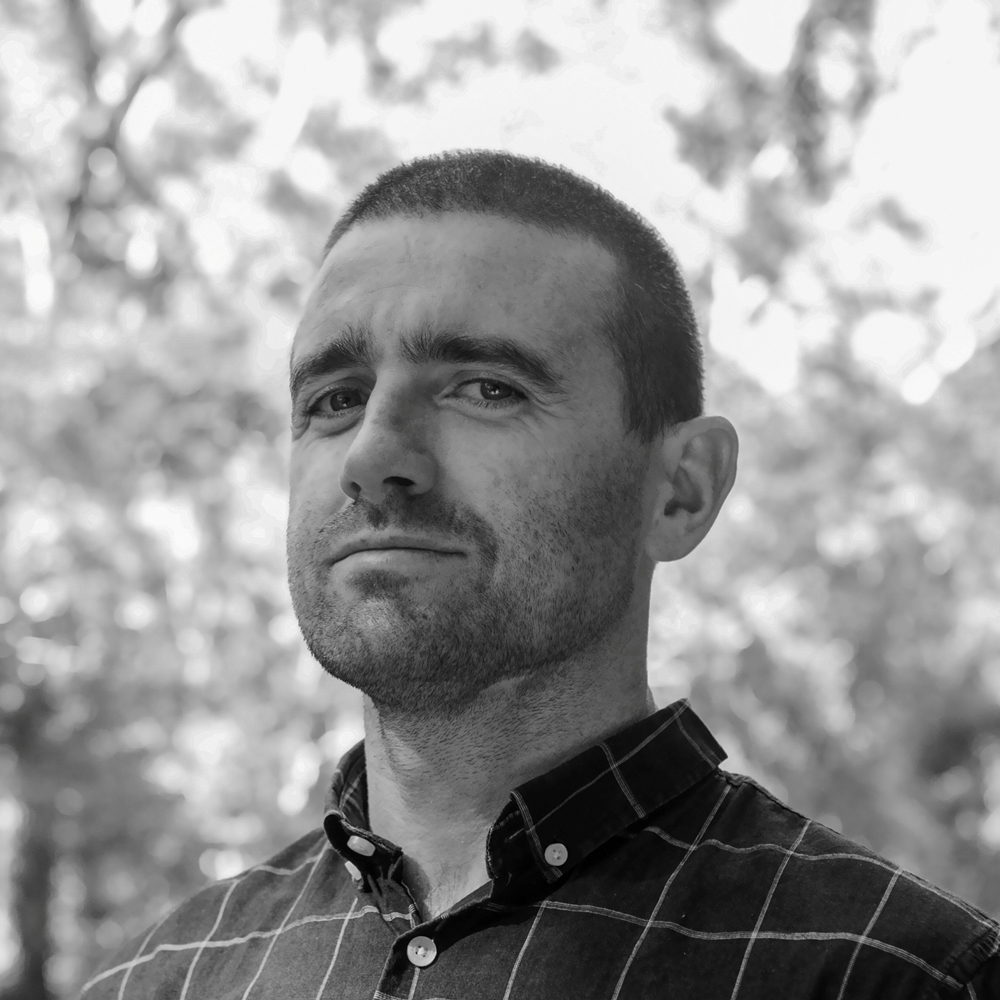Sean Rafferty
Brisbane
2019
Displayed 2019 at Carriageworks

Sean Rafferty
Born 1979, Galway, Ireland. Lives and works Brisbane
Collecting, mapping and archiving are the foundational processes of Sean Rafferty’s practice. Over time, his collections and their materials have become ongoing projects that he catalogues, writes about and arranges for presentation in a variety of formats including installations and print works, dioramas, videos, paintings and light-based works such as solar photograms. Through his work Rafferty examines places – their topographies, mythologies, histories and landscapes – and how they are represented in cinema, literature, painting and ephemera, including packaging. His ongoing collection of Australian fruit and vegetable cartons is documented at cartonography.com.
Photograph: Victor Frankowski
Artist text
by Elizabeth Reidy
Sean Rafferty uses the processes of collecting, mapping and archiving as the foundations of his practice. His interest in Australian fruit and vegetable carton designs began while he was in art school working in grocery stores. This interest was in part spurred by the cartons’ artwork, but as much by his keenness to identify their origins, which led Rafferty directly to the doors of Australian fruit and vegetable farming communities. Through his extensive traversing of fruit-farming regions, Rafferty has developed Cartonography, a collection reflecting the uniqueness of the communities with which he connects.
Cartonography reimagines mapping by presenting a picture of regional fruit and vegetable farming communities through fruit-carton artwork produced within specific regions. Rafferty conducted his first ‘cartonographic’ field trip to Far North Queensland (FNQ) in 2014, where he engaged directly with farmers to collect cartons and seek the stories behind their artwork. The collection and accompanying field-trip documentation was presented in the inaugural Cartonography exhibition (2014) at Bondi Pavilion Gallery. Rafferty has since produced multiple exhibitions nationwide, collecting directly from fruit-farming communities and presenting location-specific cartonographic maps at Shepparton Festival (2017), the Museum of Brisbane (2017) and Cairns Art Gallery (2018). In 2016 the Cartonography collection was made available through the National Library of Australia via the online collection search engine Trove.
The version presented in The National 2019, Cartonography (FNQ) (2019), is the culmination of an extended period of collecting and documenting the fruit and vegetable carton designs specific to the region north of Cardwell in FNQ. The myriad stories behind the physical Cartonography collection specific to this area often prove as penetrating and humorous as the cartons themselves, but perhaps one of the more fascinating by-products of Rafferty’s process is the community engagement inadvertent in his project. From running in the final leg of the Great Wheelbarrow Race between Dimbulah and Mareeba, through to driving two hours across the Atherton Tablelands for a ten-minute conversation about why a banana box features tigers, Rafferty has spent extended time in unexpected ways to extract the meanings behind fruit and vegetable carton artwork.
By virtue of the time he has taken to meet, exchange and document the stories behind designs, Rafferty has also brought into focus multiple strains of Australian social history, namely those of cultural migration and the rise and fall of industry. The growth of the Australian tobacco industry in FNQ is closely connected to the Italian diaspora who settled in the area during successive waves of migration over the 20th century. Following the demise of the industry in 2004 (1), many tobacco farmers adapted to the exotic fruits now particular to the region – lemons, limes, mangoes, grapefruit and bananas. As one former tobacco producer put it, fruit and vegetable cartons now function as enlarged business cards for farmers (2); to which Rafferty further observes, cartons are a unique coat of arms for many farming families. (3)
Cartonography (FNQ) provides a new view of the rural region of FNQ, with the carton archive unveiling mystical truths and conveying markers that characterise the landscape in ways new and unseen.
Notes
(1) ‘The tobacco growing industry’, Tobacco in Australia: Facts and Issues, Cancer Council Victoria, 2018, retrieved 5 November 2018, https://www.tobaccoinaustralia.org.au/chapter-10-tobacco-industry/10-1-the-tobacco-growing-industry.
(2) Joe Moro, mango farmer and President of the FNQ Fruit and Vegetable Growers Association, in conversation with the author, 2018.
(3) Sean Rafferty, ‘Emblematica: the fruit box as coat of arms’, Cartonography (blog), 28 March 2014, retrieved 3 October 2018, https://cartonography.com/2014/03/28/emblematica-the-fruit-box-as-coat-of-arms/.
For more information about the cartons displayed in this installation, including catalogue and map details, interviews and photographs, please visit an interactive image at cartonography.com/the-national/ where you can click on individual cartons and learn more.
